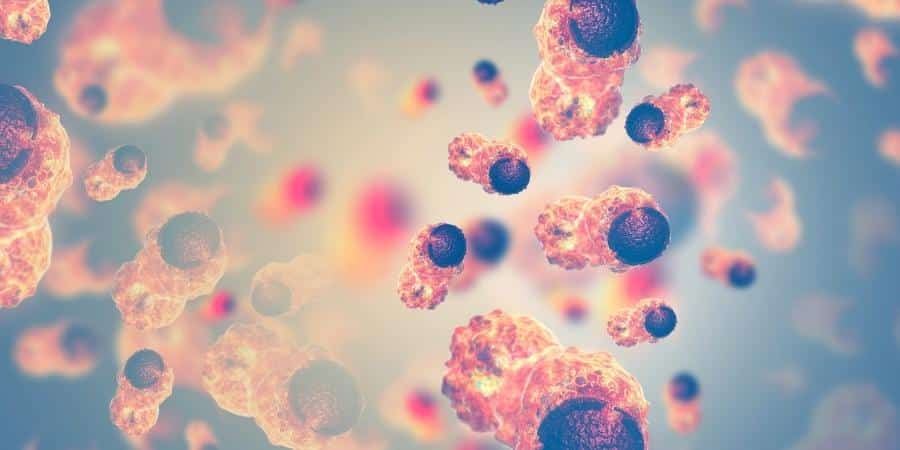The 6th COMy Congress was dedicated to notable innovations in the treatment of multiple myeloma and to the many questions that still lack a decisive response.
“When I was a young doctor, myeloma was an incurable disease. I would face my patients helplessly, and I had no effective remedy or hope to offer them. Today, multiple myeloma is one of the diseases that has seen meteoric therapeutic progress, the most impressive in the field of hematology. Patients’ life expectancy is significantly extended and we have the ability to cure the disease,” shares Prof. Arnon Nagler.

Multiple myeloma is the second most common blood cancer. Approximately 500 new cases are reported in Israel every year. The disease affects the plasma cells that are responsible for producing antibodies, which protect against infections and disease. In multiple myeloma, the plasma cells become malignant and proliferate uncontrollably
“Until about 10 years ago, treatment for multiple myeloma was based primarily on chemotherapy, and a myeloma patient lived an average of three years. Since then, developments in innovative treatments have enabled life expectancy to increase to an average of 10 years. With the help of all these new, revolutionary treatments, patients will probably live longer than 10 years and fully recover from multiple myeloma,” said Prof. Nagler.
Who is at Risk for Developing Multiple Myeloma?
The incidence of multiple myeloma increases with age, and the average age of patients is 65-74 years old, although there are also cases of younger people developing the disease. Men are at a slightly higher risk than women. Multiple myeloma is a complex disease and patients typically suffer from recurrences, each of which becomes increasingly difficult to treat.
Modern Treatment Goes Beyond Traditional Chemotherapy
There is currently no other disease for which the health authorities have approved more new drugs than multiple myeloma. In the past decade alone, 15 new medications have been approved. In only the last year, three drugs have been approved, which operate with innovative mechanisms that were unknown until now. Additionally, many more drugs are under development and making considerable progress.
Until recently, the only treatments were chemotherapy and bone marrow transplantation. Since research and development in multiple myeloma has expanded and developed, alternate drugs are now available. Some of these advanced therapies intervene in the mechanisms of disease formation and support immune system activity.
“For the past three years in Israel and worldwide, we have been working on therapies that engineer the immune system to fight myeloma. We have a long way to go, but we’ve been treading it safely,” said Nagler.
Changes in Life Expectancy
In the not-too-distant past, the life expectancy of patients with multiple myeloma was about three years. Today, due to advanced treatments, it has been extended to 10 years. Recent studies demonstrate that treatment involving the addition of an antibody (CD38) to attack cancer cells results in about 90% of patients achieving a complete or good response to treatment.
Moreover, in about 60% of patients, not even minimal residual disease (i.e., one malignant cell per 100,000 cells) can be detected following this therapy. In comparison, only 40-60% of patients achieved this level of response in the past, and only a handful of patients had only one malignant cell per 100,000 cells.
Revolutionary CAR T-cell Therapy
“The most groundbreaking treatment for myeloma is CAR T-cell therapy. This is the engineered immunologic cell therapy slated to change the face of hematology, and possibly replace bone marrow transplants in the future,” Nagler explained.
CAR T-cell therapy works by engineering the cells of the patient’s immune system to fight the tumor directly by identifying a protein expressed in the malignant cells.
At the COMy Congress, three studies on different CAR T-cells were presented. All three methods will receive FDA approval. They work by targeting a protein called BCMA (B-cell maturation antigen), which is found on the surface of myeloma cells.
The impressive results of the CARTITUDE-1 study were presented at the conference. This study, which included patients from Israel, showed a remarkable breakthrough in myeloma treatment. It was administered to patients who had exhausted all other treatment options, having previously received up to seven different lines of therapy! In 100% of the participating patients, the myeloma protein decreased by 96%, showing evidence of disease remission. Additionally, the reaction was observed rapidly, within a month of treatment. In 80% of the patients, the myeloma cells disappeared completely.
In the second study involving CAR T-cells, the KarMMa study, 88% of patients showed similar results. Another study, called EVOLVE, achieved a similar response in 90% of patients.
Immunotherapies, including engineered T-cells, are at the forefront of future treatment of multiple myeloma and other cancers. The results hold great promise for myeloma patients, with three exciting and innovative options for patients who have not experienced success with any other cancer treatment. Two of these therapeutic preparations will be approved in Europe and Israel
New Antibodies Against Myeloma
The conference also featured presentations about new antibodies against myeloma that transform and activate the immune system against myeloma. In these specific antibodies, called bilayers, one head binds to the immune system and a second projectile binds to myeloma cells. The way in which these “antibodies” bind to non-chemotherapeutic T-cells is groundbreaking, giving hope to patients.
New Goals in Myeloma Treatment
Further discussions have grappled with the sweeping recommendations to provide patients with the new antibodies (CD38) as a frontline treatment. European and American health authorities have approved these treatments for a while.
The immune system plays a significant role in fighting and eradicating leukemia. In the past 4-5 years, antibodies against myeloma cells have been developed – with antibodies against the CD38 protein leading the way. With its help, an excellent response has been achieved in about 90% of all myeloma patients.
In over 70% of patients studied, not a single cancerous myeloma cell was identified following treatment. This finding has led to the fact that today, treatment with antibodies is used at the first stage of therapy for myeloma patients. Patient response to treatment, life expectancy and chances of recovery have all been improved dramatically.




